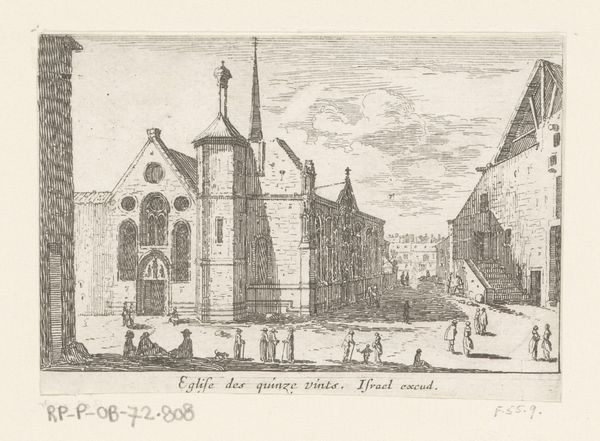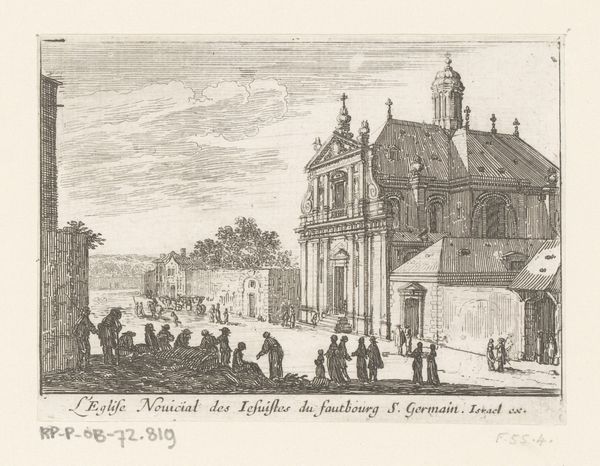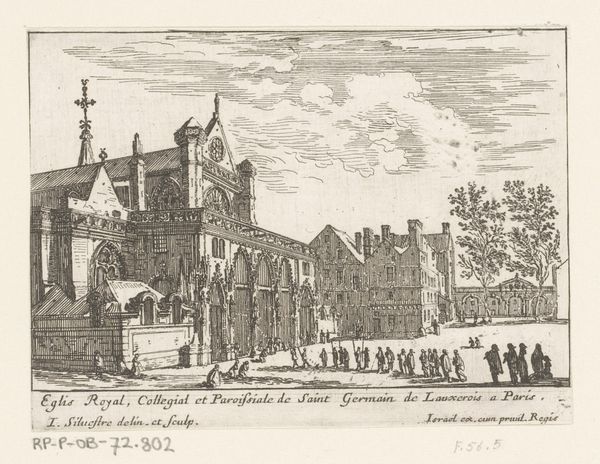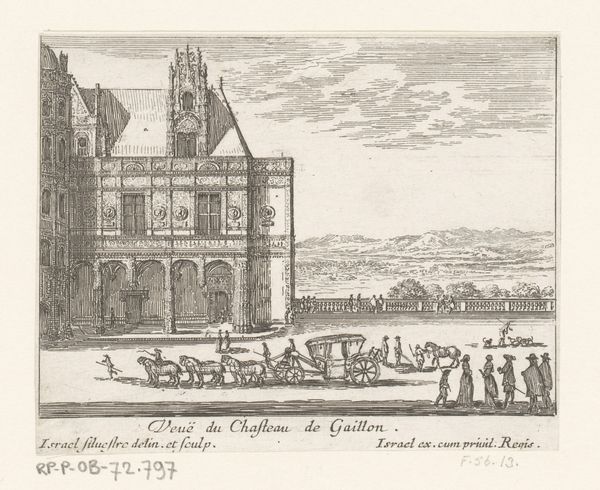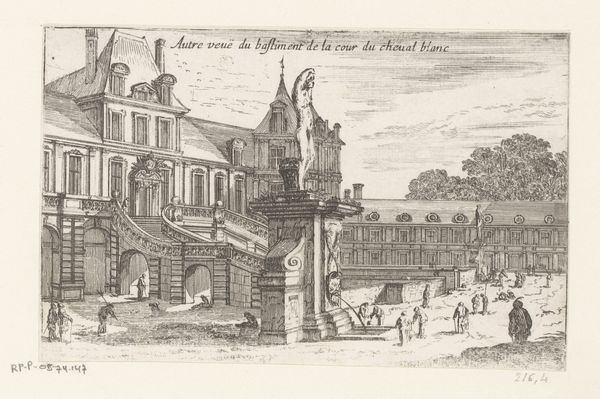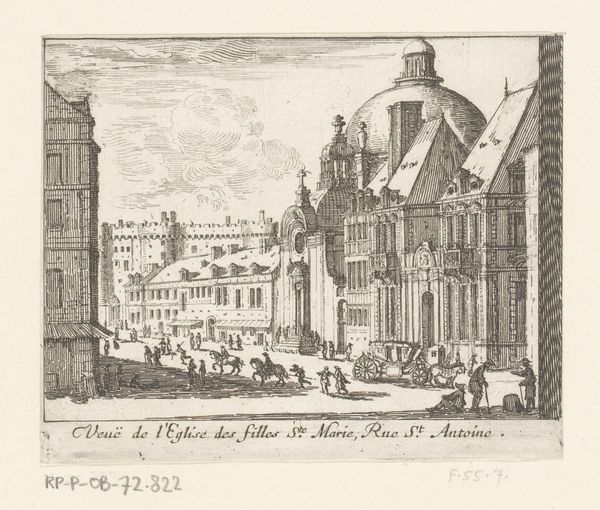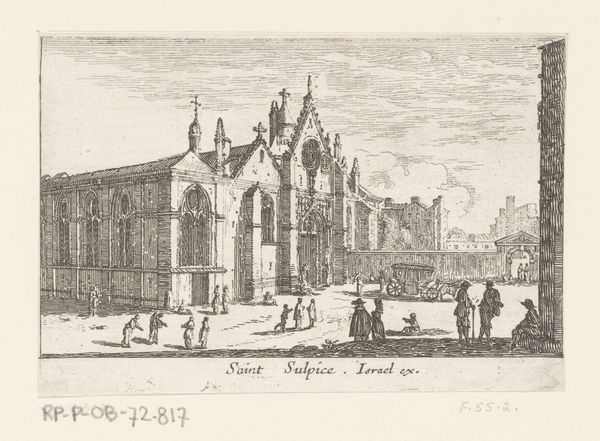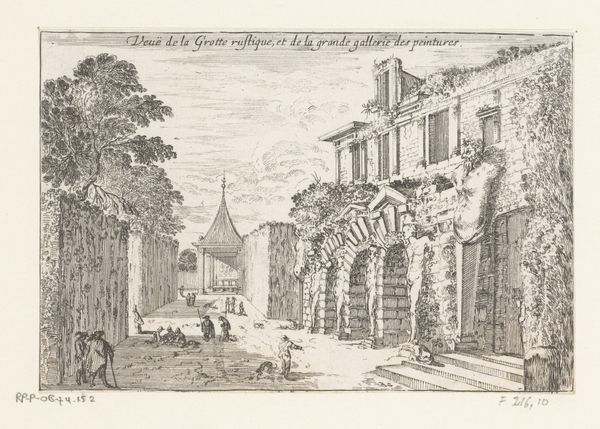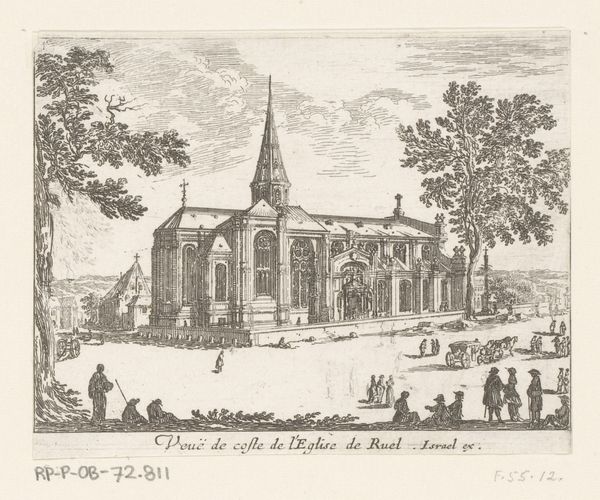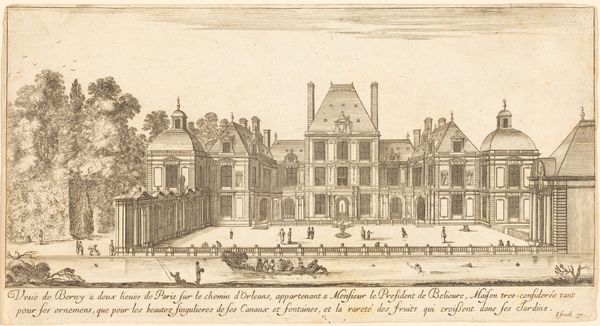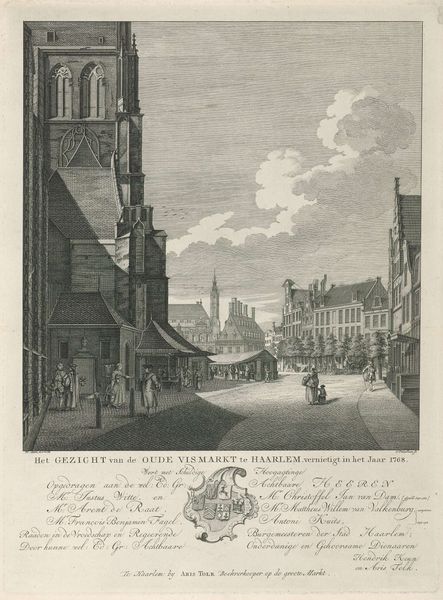
print, etching, engraving
#
baroque
# print
#
pen sketch
#
etching
#
old engraving style
#
perspective
#
line
#
cityscape
#
engraving
Dimensions: height 90 mm, width 109 mm
Copyright: Rijks Museum: Open Domain
Editor: We’re looking at "View of the Hôtel-Dieu Hospital in Paris," an etching by Israel Silvestre, created sometime between 1631 and 1661. It's so detailed, almost architectural in its precision. What strikes me is the artist's command of perspective. What stands out to you as you look at this print? Curator: Indeed. Note the deliberate linearity etched into the very structure of the piece. Consider the lines composing the facade of the hospital: observe their convergence, creating depth within a two-dimensional plane. The architectural details, almost mechanically reproduced, establish a rigorous, formal framework. Does this calculated rendering reveal a specific underlying structure, would you say? Editor: I see what you mean. It’s less about capturing a mood and more about presenting the factual appearance of the building, but how do the human figures fit into that structure? They are not presented so linearly. Curator: An interesting observation! Perhaps those figures, rendered with slightly less geometric rigor, serve to emphasize, by contrast, the very order of the architectural construct. Their presence defines scale and accentuates, almost like stage props, the geometry of the edifice. How would you assess the contribution of light and shadow in delineating this contrast, then? Editor: Good point. Now that you mention it, the darker etching that represents the figure groups draws a stark distinction against the lighter etching used for the façade. Thanks! It gives me a lot to think about regarding how formal elements create contrasts. Curator: Precisely! Understanding these elements provides a lexicon for deconstructing artistic intention.
Comments
No comments
Be the first to comment and join the conversation on the ultimate creative platform.

